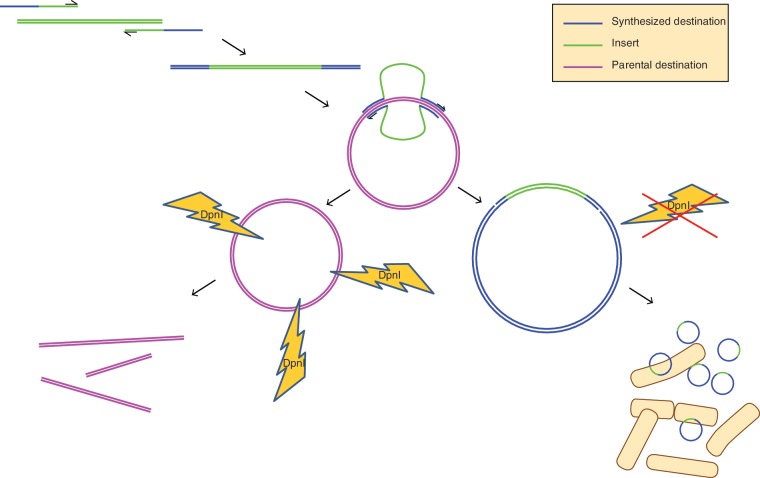Figure 1.
Schematic of a typical restriction free cloning protocol. Hybrid primers are designed with complementarity to the desired insert (green) and the destination plasmid (blue). A first round of PCR is performed to create a ‘mega-primer’ comprising the insert sequence flanked by sequences complementary to the destination plasmid. During a second round of PCR, the mega-primer initiates replication of the destination plasmid (pink). Since the entire destination plasmid is replicated in the reaction, mega-primer binding to a daughter molecule fails to expose a free 3′-end for polymerase elongation, so accumulation of new product is linear. The destination plasmid must be purified from a DAM+ bacterial stain, since DpnI is used to selectively degrade parental DNA after the second PCR reaction, leaving the unmethylated daughter products intact. The reaction can then be used to transform competent bacteria.

